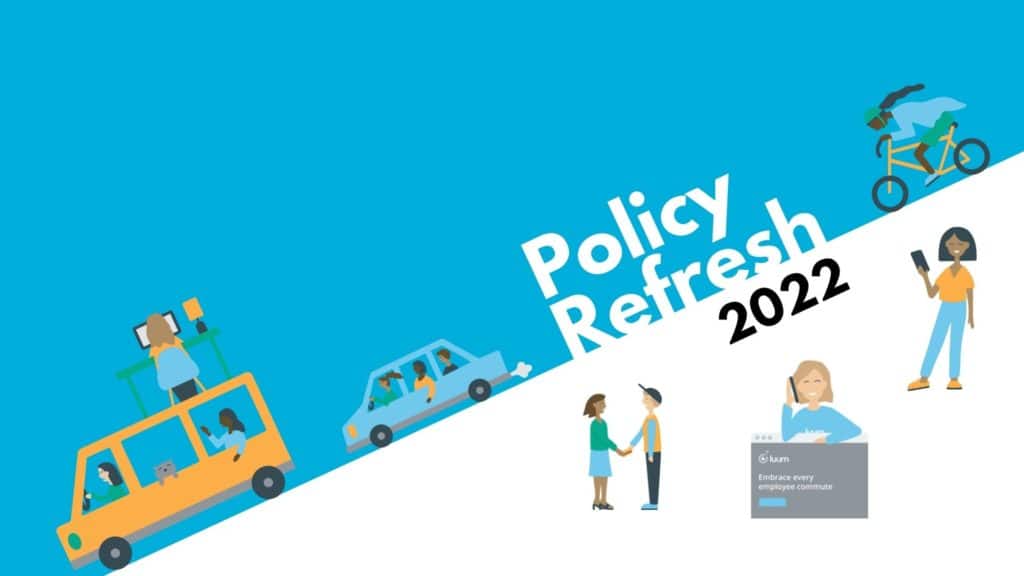The Real Cost of Free Parking
If you’ve ever brought a book on a plane only to read a few pages the entire flight, you know how that unique disappointment feels. You hauled your book through security and used precious overhead space only to have it sit in your bag, nearly unread. Why would you bring something along that you hardly use?
As it turns out, most Americans do it every day. We haul 4,000 lbs of metal to work, leave it alone for hours, and haul it back home. Even the eco-conscious drivers – the electric vehicle owners – and the long-haul commuters contribute to this staggering statistic: our cars sit, parked, 95% of the time.1 But most of us aren’t willing to change — driving to work is just too convenient when our roads are built and subsidized for private vehicle transportation.
Yes, too convenient. The reason so many people commute by car is that there’s often no perceived immediate consequence of driving alone to work. Driving to work is easy, fast, and — if your employer doesn’t charge for parking — it feels free.
Of course, it’s not actually free. You purchased your car at some point (we hope). You continually insure it, maintain it, and fuel it with gasoline. Traffic makes you angry and tired. The time you spend behind the wheel is wasted. What’s more, your vehicle’s value depreciates even as it sits idle in the parking lot. But driving to work doesn’t feel like a big cost, because that one levy vanishes with your employee perks: you have free parking.
Free parking doesn’t offset the cost of owning a car, but driving commuters are often offered a monetary perk that non-driving commuters aren’t. If a parking space goes for $150/month and an employer is giving it to an employee for free, that’s a $150 monthly benefit that only driving employees reap. While driving commuters receive cost cuts on their commutes, bus and train commuters have the feeling of losing money by paying a fare for every trip. There’s a disincentive to practice healthier, more sustainable commuting habits! Somehow, this stick has two short ends: drivers get the perception of a cheaper commute, and those who take public transit miss out on a benefit while often still suffering in the traffic created by private commuters (remember, cars aren’t traffic, people are). It’s a faulty system on both ends.

So: how do we make driving feel as expensive as it really is? One change is easy to make — no more free parking! In order to influence people, there needs to be a deterrent on destructive behavior.
Another critical aspect is harder to change, but equally important: we need to change the entitlement culture of free parking. Donald Shoup, author of “The High Cost of Free Parking”, points out that “it’s unfair to have cities where parking is free for cars and housing is expensive for people”. But this disparity feels normal to us, because we’re used to paying rent while parking has historically been given to us for free. When we drive to a shopping center, a friend’s house, or even into our own driveways, we expect to have an empty space in which to keep our cars at no cost. The free parking guarantee encourages us to drive. As we drive more, congestion and emissions rise, and more money goes toward meeting parking demand instead of toward public transit, which would be not only beneficial to those who can’t afford a car or parking, but also to the quality of life and environmental welfare of the city.
But – on the other side of the coin – when we go places we know we can’t park for free, like the airport, we are motivated to consider other transport options rather than face the displeasure of having to pay to park. But that displeasure, while irksome, is important – it’s like a speeding ticket that discourages us from driving unsafely, a stomach ache that discourages us from eating a whole cake, or a plastic cup fee that encourages us to bring a travel mug. When something is costly, whether monetarily, environmentally, or to public safety, we should pay for it.
1 https://www.reinventingparking.org/2013/02/cars-are-parked-95-of-time-lets-check.html
More In the Luumlight
HR Dive: Enterprise employers navigate the hybrid commute
Our annual virtual conference, Luuminary22, was held on July 20th. We gathered a wonderful group of leaders to discuss the hottest topics of 2022: including…
Your hybrid workforce doesn’t need commuter benefits. They need mobility benefits.
Life is not the same as it once was. The workforce is continually changing, and so are employees’ needs, causing a rethink in the ways…
Return to Better: Commuter Benefit Policies For 2022 and Beyond
Daily flexibility and choice will keep your commuters safe, happy, and productive. Whether your workforce has been commuting throughout the pandemic or returning to office…



